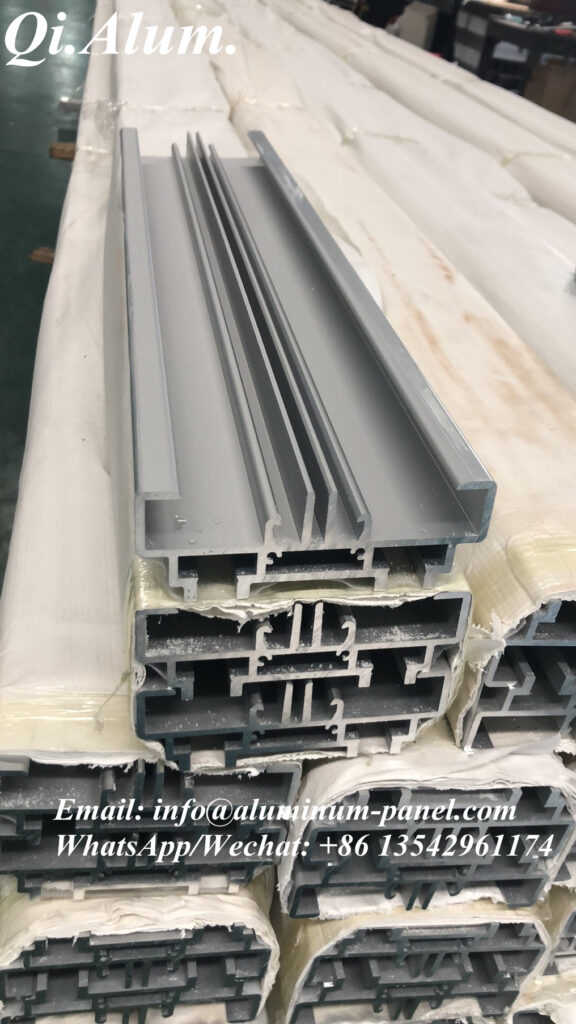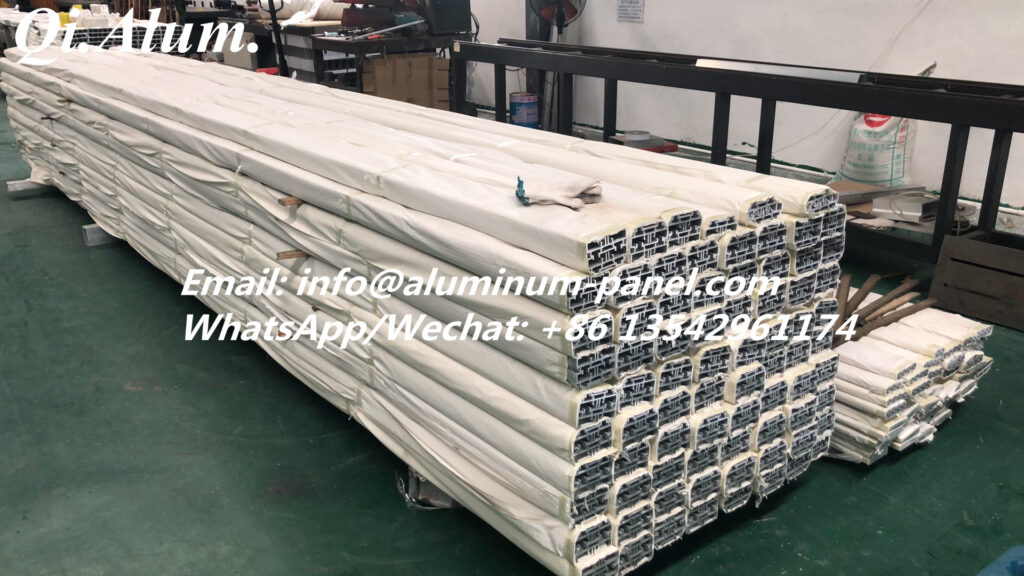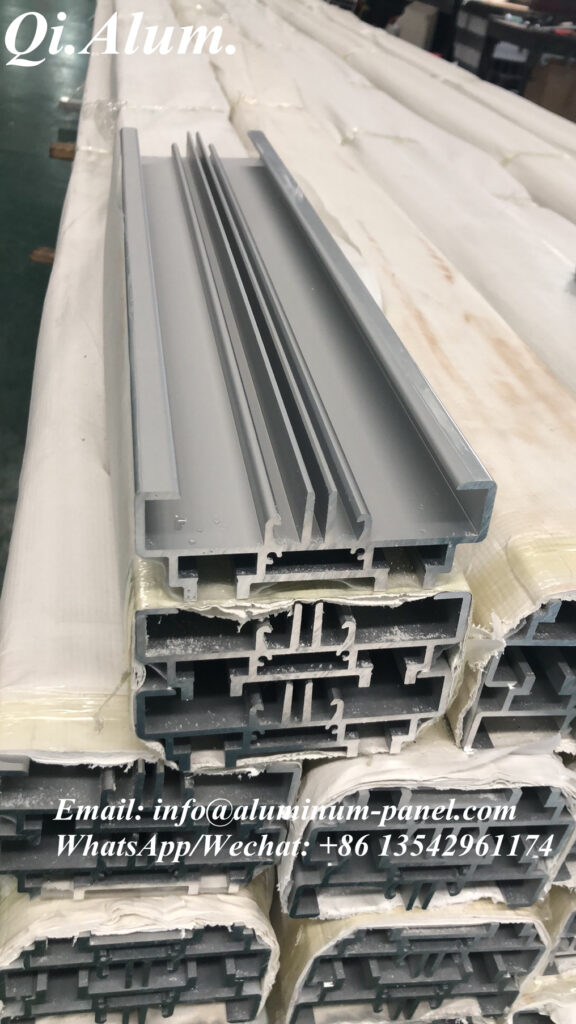Industrial aluminum profiles and building aluminum profiles belong to 6063 brand aluminum profiles, so their alloy composition and alloy content is the same, so there is no difference between industrial aluminum profiles and building aluminum profiles in mechanical properties. In addition, they have no difference in solderability, electrical and thermal conductivity, surface treatment, corrosion resistance and cutting performance, so, where is the difference between industrial aluminum and construction aluminum?
- Different cross section shapes
Industrial aluminum profiles are mostly symmetrical. Most of the construction aluminum section is asymmetric, bending degree is relatively large, some cantilever is larger. However, industrial aluminum profiles have more cavities than construction aluminum profiles, and most of them are round holes.
2, different wall thickness
Generally speaking, the wall thickness of industrial aluminum profiles is greater than that of construction aluminum profiles. Because the bearing capacity of door window curtain wall profile is not so high, decoration is stronger, so the wall thickness is thinner. And industrial aluminum profiles are used for equipment frame and bracket, so the bearing requirements are higher, thicker wall.
- Different surface treatment methods
General industrial aluminum profile surface only need anodic oxidation treatment, at most add a sandblasting process, make matte effect. However, there are many surface treatment methods for building aluminum profiles, such as spraying, electrophoresis, wood grain transfer printing and so on. Because architectural aluminum profiles are more decorative and colorful. And industrial aluminum profiles pay attention to the atmosphere and clean, generally only need natural color oxidation treatment, a few need black oxidation.
4, different quality requirements
The tolerance requirement of industrial aluminum profile is higher than that of construction aluminum profile, and the surface quality of base material is higher. Because of the transparent oxide film formed by the anodic oxidation of industrial aluminum profiles, if there are any defects on the surface of the substrate, it is clear at a glance



